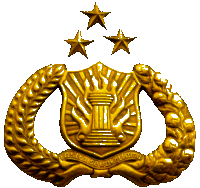Personality is that which makes us what we are and that which makes us different from others. People who are especially different, for example, are said to have ?personality? or be ?quite a character.? Other people have ?no personality at all.? Depending on how someone affects us, he or she may be viewed as having a ?good personality? or a ?bad personality.? In the past several decades, the study of personality and its disorders has become central to the study of abnormal psychology. In the course of clinical work, we encounter subjects with vastly different pathologies. Some are in the midst of a depressive episode, and some must cope with the lasting effects of traumas far beyond the range of normal human experience. Some are grossly out of contact with reality, and some have only minor problems in living rather than clinical disorders. Although the problems of patients vary, everyone has a personality. Personality disorders occupy a place of diagnostic prominence today and constitute a special area of scientific study. The issues involved are complex, certainly much more sophisticated than the everyday understanding of personality described in the previous questions. This chapter introduces the emergence of this new discipline by analyzing personality and personality disorders by comparing and contrasting the basic assumptions that underlie different approaches to these ideas and by presenting the fundamentals of the classical perspectives on personality, which are essential to the understanding of the clinical chapters that follow. The questions are: What is personality? How does our definition of personality inform our understanding of personality disorders? Do the assumptions underlying the concept of personality support the use of the term disorder? How can the content of different personality disorders best be described? One way to investigate the definition of a term is to examine how its meanings and usage have evolved over time. The word personality is derived from the Latin term persona, originally representing the theatrical mask used by ancient dramatic players. As a mask assumed by an actor, persona suggests a pretense of appearance, that is, the possession of traits other than those that actually characterize the individual behind the mask. In time, the term persona lost its connotation of pretense and illusion and began to represent not the mask, but the real person?s observable or explicit features. The third and final meaning personality has acquired delves beneath surface impression to turn the spotlight on the inner, less often revealed, and hidden psychological qualities of the individual. Thus, through history, the meaning of the term has shifted from external illusion to surface reality and finally to opaque or veiled inner traits. This last meaning comes closest to contemporary use. Today, personality is seen as a complex pattern of deeply embedded psychological characteristics that are expressed automatically in almost every area of psychological functioning. That is, personality is viewed as the patterning of characteristics across the entire matrix of the person.


